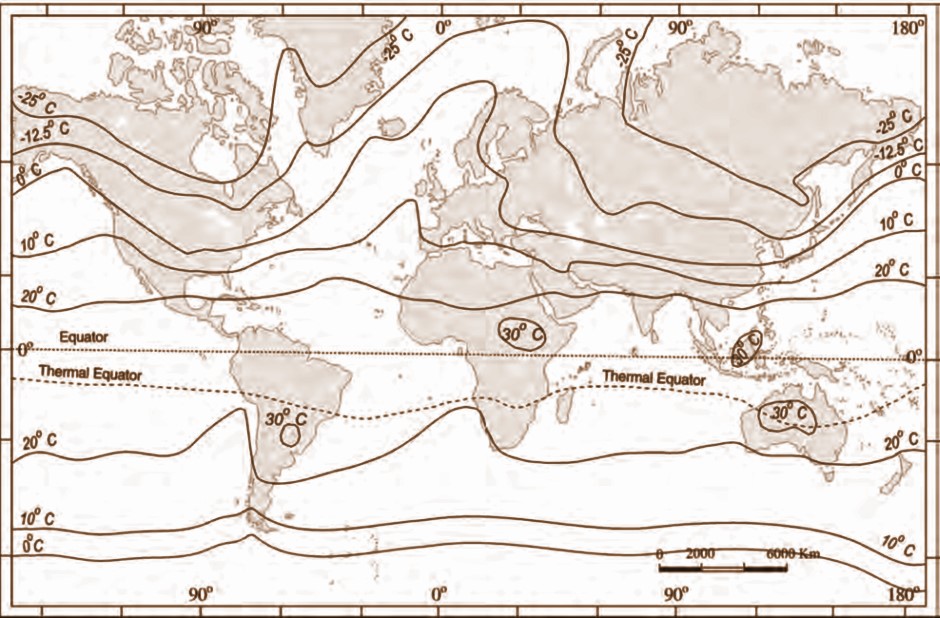Statement I: In January, in the Northern Hemisphere, the isotherms bend equatorward while crossing the landmasses, and poleward while crossing the oceans.
Statement II: In January, the air over the oceans is warmer than that over the landmasses in the Northern Hemisphere.
Which one of the following is correct in respect of the above statements?
(a) Both Statement I and Statement II are correct and Statement II explains Statement I
(b) Both Statement I and Statement II are correct but Statement II doesnot explain Statement I
(c) Statement I is correct but Statement II is not correct
(d) Statement I is not correct but Statement II is correct
Ans-a
Explanation
The lines drawn on maps joining the places of equal temperature relative to sea level are called isotherms
In January, the sun shines vertically overhead near the tropic of Capricorn. Hence, it is summer in southern hemisphere and winter in the northern hemisphere.
Isotherms are generally parallel to the latitude. Generally, isotherms are straight but they bend at the junction of continents and oceans due to differential heating and cooling of land and water. The deviation from this general trend is more pronounced in January than in July, especially in the northern hemisphere.
In January, isotherms suddenly bend poleward while passing through warm portions of oceans and bend equatorward while passing through cold portions of the oceans in January in northern hemisphere while the trend is opposite in July.
Hence, statement 1 is correct
In the northern hemisphere the land surface area is much larger than in the southern hemisphere. Hence, the effects of land mass and the ocean currents are well pronounced. This can be seen on the North Atlantic Ocean. The presence of warm ocean currents, Gulf Stream and North Atlantic drift, make the Northern Atlantic Ocean warmer and the isotherms bend towards the north. Over the land the temperature decreases sharply and the isotherms bend towards south in Europe.
Hence, statement 2 is correct & explains statement 1
The distribution of surface air temperature in the month of January

Read: Previous Year UPSC Geography Questions (PYQs) With Explanation 2025


